
Illustrative Math Alignment: Grade 7 Unit 7
Expressions, Equations, and Inequalities
Lesson 8: Reasoning about Solving Equations (Part 2)
Use the following Media4Math resources with this Illustrative Math lesson.
| Thumbnail Image | Title | Body | Curriculum Topic |
|---|---|---|---|
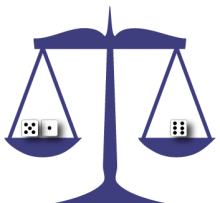
|
Math Clip Art--Equations and Inequalities--Equation Models--Balanced Equation 1 | Math Clip Art--Equations and Inequalities--Equation Models--Balanced Equation 1
This is part of a collection of math clip art images about equations and inequalities. |
Applications of Equations and Inequalities |

|
Math Clip Art--Equations and Inequalities--Equation Models--Balanced Equation 2 | Math Clip Art--Equations and Inequalities--Equation Models--Balanced Equation 2
This is part of a collection of math clip art images about equations and inequalities. |
Applications of Equations and Inequalities |

|
Math Clip Art--Equations and Inequalities--Equation Models--Balanced Equation 3 | Math Clip Art--Equations and Inequalities--Equation Models--Balanced Equation 3
This is part of a collection of math clip art images about equations and inequalities. |
Applications of Equations and Inequalities |
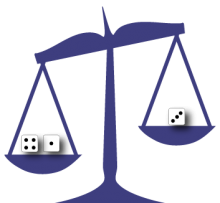
|
Math Clip Art--Equations and Inequalities--Equation Models--Unbalanced Equation 1 Left | Math Clip Art--Equations and Inequalities--Equation Models--Unbalanced Equation 1 Left
This is part of a collection of math clip art images about equations and inequalities. |
Applications of Equations and Inequalities |

|
Math Clip Art--Equations and Inequalities--Equation Models--Unbalanced Equation 1 Right | Math Clip Art--Equations and Inequalities--Equation Models--Unbalanced Equation 1 Right
This is part of a collection of math clip art images about equations and inequalities. |
Applications of Equations and Inequalities |

|
Math Clip Art--Equations and Inequalities--Equation Models--Unbalanced Equation 2 Left | Math Clip Art--Equations and Inequalities--Equation Models--Unbalanced Equation 2 Left
This is part of a collection of math clip art images about equations and inequalities. |
Applications of Equations and Inequalities |

|
Math Clip Art--Equations and Inequalities--Equation Models--Unbalanced Equation 2 Right | Math Clip Art--Equations and Inequalities--Equation Models--Unbalanced Equation 2 Right
This is part of a collection of math clip art images about equations and inequalities. |
Applications of Equations and Inequalities |

|
Math Clip Art--Equations and Inequalities--Equation Models--Unbalanced Equation 3 Left | Math Clip Art--Equations and Inequalities--Equation Models--Unbalanced Equation 3 Left
This is part of a collection of math clip art images about equations and inequalities. |
Applications of Equations and Inequalities |

|
Math Clip Art--Equations and Inequalities--Equation Models--Unbalanced Equation 3 Right | Math Clip Art--Equations and Inequalities--Equation Models--Unbalanced Equation 3 Right
This is part of a collection of math clip art images about equations and inequalities. |
Applications of Equations and Inequalities |

|
Math Clip Art--Equations and Inequalities--Equation Models--Unbalanced Equation Left | Math Clip Art--Equations and Inequalities--Equation Models--Unbalanced Equation Left
This is part of a collection of math clip art images about equations and inequalities. |
Applications of Equations and Inequalities |

|
Math Clip Art--Equations and Inequalities--Equation Models--Unbalanced Equation Right | Math Clip Art--Equations and Inequalities--Equation Models--Unbalanced Equation Right
This is part of a collection of math clip art images about equations and inequalities. |
Applications of Equations and Inequalities |

|
Math Clip Art--Equations and Inequalities--Inequalities | Math Clip Art--Equations and Inequalities--Inequalities
This is part of a collection of math clip art images about equations and inequalities. |
Inequalities |
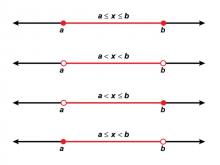
|
Math Clip Art--Equations and Inequalities--Inequalities--Compound Inequalities Set 1 | Math Clip Art--Equations and Inequalities--Inequalities--Compound Inequalities Set 1
This is part of a collection of math clip art images about equations and inequalities. |
Inequalities |
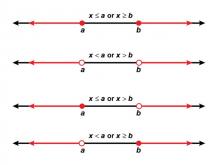
|
Math Clip Art--Equations and Inequalities--Inequalities--Compound Inequalities Set 2 | Math Clip Art--Equations and Inequalities--Inequalities--Compound Inequalities Set 2
This is part of a collection of math clip art images about equations and inequalities. |
Inequalities |
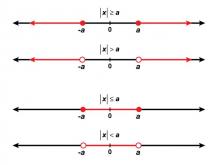
|
Math Clip Art--Equations and Inequalities--Inequalities--Compound Inequalities Set 3 | Math Clip Art--Equations and Inequalities--Inequalities--Compound Inequalities Set 3
This is part of a collection of math clip art images about equations and inequalities. |
Inequalities |
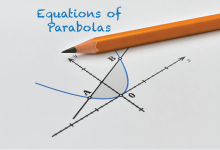
|
Math Clip Art--Quadratics Concepts--Equations of Parabolas 01 | Math Clip Art--Quadratics Concepts--Equations of Parabolas 01TopicQuadratics DescriptionThis math clip art image introduces the concept of equations of parabolas, a fundamental topic in quadratic functions. The image showcases a blue parabola drawn on graph paper, with clearly labeled x and y axes. Points are marked on the graph, providing a visual representation of key points on a parabola. |
Graphs of Quadratic Functions |
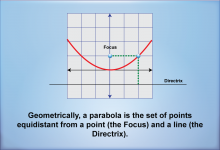
|
Math Clip Art--Quadratics Concepts--Equations of Parabolas 02 | Math Clip Art--Quadratics Concepts--Equations of Parabolas 02TopicQuadratics DescriptionThis math clip art image illustrates the geometric definition of a parabola. It shows a red parabola on a grid, with clearly labeled focus and directrix. The parabola is symmetric around the vertical axis, demonstrating a key property of parabolas. |
Graphs of Quadratic Functions |
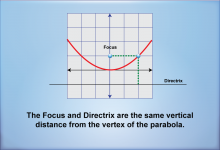
|
Math Clip Art--Quadratics Concepts--Equations of Parabolas 03 | Math Clip Art--Quadratics Concepts--Equations of Parabolas 03TopicQuadratics DescriptionThis math clip art image builds upon the previous concept, showing a red parabola opening upwards on a grid. The focus is clearly marked above the vertex, and the directrix is represented as a horizontal line below the vertex. This visual representation emphasizes a crucial property of parabolas: the focus and directrix are equidistant from the vertex. |
Graphs of Quadratic Functions |
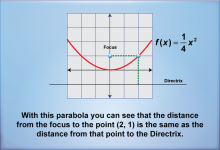
|
Math Clip Art--Quadratics Concepts--Equations of Parabolas 04 | Math Clip Art--Quadratics Concepts--Equations of Parabolas 04TopicQuadratics DescriptionThis math clip art image presents a red parabola on a grid with its equation f(x) = 1/4x2. The focus and directrix are clearly labeled, demonstrating the symmetry of the parabola. A specific point (2, 1) is highlighted to show that its distance from the focus is equal to its distance from the directrix. |
Graphs of Quadratic Functions |
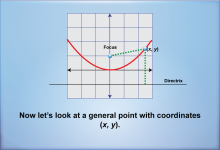
|
Math Clip Art--Quadratics Concepts--Equations of Parabolas 05 | Math Clip Art--Quadratics Concepts--Equations of Parabolas 05TopicQuadratics DescriptionThis math clip art image introduces a more general approach to understanding parabolas. It depicts a parabola with its focus at (0, f) and includes a directrix. The key feature of this image is the marking of a general point with coordinates (x, y) on the parabola. |
Graphs of Quadratic Functions |
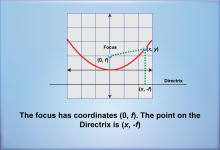
|
Math Clip Art--Quadratics Concepts--Equations of Parabolas 06 | Math Clip Art--Quadratics Concepts--Equations of Parabolas 06TopicQuadratics DescriptionThis math clip art image builds upon the previous concept, showing a parabola with its focus at (0, f) and a directrix line below it. The image specifically labels the point on the directrix as (x, -f), corresponding to the x-coordinate of a point on the parabola. |
Graphs of Quadratic Functions |
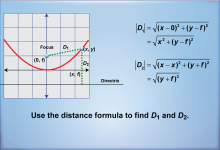
|
Math Clip Art--Quadratics Concepts--Equations of Parabolas 07 | Math Clip Art--Quadratics Concepts--Equations of Parabolas 07TopicQuadratics DescriptionThis math clip art image advances the concept of deriving a parabola's equation. It shows a parabola with its focus at (0, f) and directrix, and introduces calculations for distances D1 and D2. These distances represent the key relationship that defines a parabola: the equidistance of any point on the parabola from the focus and the directrix. |
Graphs of Quadratic Functions |
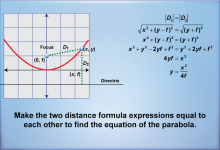
|
Math Clip Art--Quadratics Concepts--Equations of Parabolas 08 | Math Clip Art--Quadratics Concepts--Equations of Parabolas 08TopicQuadratics DescriptionThis math clip art image presents the culmination of the parabola equation derivation process. It shows a parabola with its focus at (0, f) and directrix, along with distances D1 and D2 illustrated from a point (x, y) on the parabola to the focus and directrix, respectively. The image also includes the equation derivation, demonstrating how to equate the two distance formulas. |
Graphs of Quadratic Functions |

|
Math Clip Art--Quadratics Concepts--Equations of Parabolas 09 | Math Clip Art--Quadratics Concepts--Equations of Parabolas 09TopicQuadratics DescriptionThe ninth image in this collection visually reinforces the concepts previously introduced. It illustrates a graph of a parabola with a focus point (a, b), directrix y = c, and marking the distances D1 and D2. This composition emphasizes the link between the geometric definition of a parabola and its mathematical function. |
Graphs of Quadratic Functions |
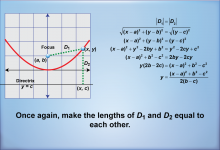
|
Math Clip Art--Quadratics Concepts--Equations of Parabolas 10 | Math Clip Art--Quadratics Concepts--Equations of Parabolas 10TopicQuadratics DescriptionThis image continues the trend of analysis by showing the process of deriving the equation for a parabola. The focus at point (a, b), the directrix at y = c, and the marked distances D1 and D2 is crucial for visual learning and conceptual understanding. With these elements illustrated, the image reinforces the message of equidistance between a point on the parabola and its defining attributes, the focus and directrix. It serves as a key teaching tool to show how algebraic formulae arise from geometrical properties. |
Graphs of Quadratic Functions |
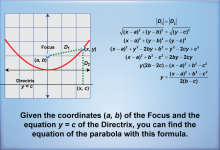
|
Math Clip Art--Quadratics Concepts--Equations of Parabolas 11 | Math Clip Art--Quadratics Concepts--Equations of Parabolas 11TopicQuadratics DescriptionThe final image in this set encapsulates the concepts presented throughout the earlier illustrations. It closely resembles the previous image while maintaining a focus on calculating the equation of a parabola. Here, the focus is again at (a, b) while the directrix follows the line y = c; D1 and D2 are marked, reiterating the need for distance calculations. |
Graphs of Quadratic Functions |
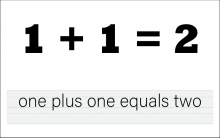
|
Math Clip Art--The Language of Math--Numbers and Equations 01 | Math Clip Art--The Language of Math--Numbers and Equations 01TopicThe Language of Math DescriptionThis image from the Language of Math collection illustrates the equation "1+1=2" using both numerical symbols and words. It serves as a fundamental building block in teaching basic addition and the concept of equality in mathematics. By presenting the equation in both numerical and verbal forms, this clip art reinforces the connection between mathematical symbols and their linguistic representations. This dual presentation is crucial for developing students' ability to translate between mathematical language and everyday language. |
Numerical Expressions |
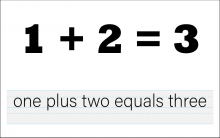
|
Math Clip Art--The Language of Math--Numbers and Equations 02 | Math Clip Art--The Language of Math--Numbers and Equations 02TopicThe Language of Math DescriptionThis clip art image from the Language of Math series depicts the equation "1+2=3" in both numerical and word form. It builds upon the previous image, introducing the concept of adding a two-digit number to a one-digit number. The visual representation of this equation helps students understand how numbers combine to form larger values. By presenting the equation in both formats, it reinforces the connection between mathematical symbols and their verbal expressions, a crucial skill in mathematical literacy. |
Numerical Expressions |
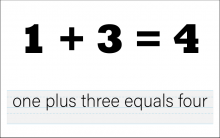
|
Math Clip Art--The Language of Math--Numbers and Equations 03 | Math Clip Art--The Language of Math--Numbers and Equations 03TopicThe Language of Math DescriptionThis clip art from the Language of Math collection presents the equation "1+3=4" in both numerical and word formats. It continues the progression of addition concepts, now introducing the sum of four. The dual representation of the equation reinforces the connection between mathematical symbols and their verbal counterparts. This visual aid helps students understand how numbers combine to create larger values and introduces the concept of "one more than" the previous equation. |
Numerical Expressions |
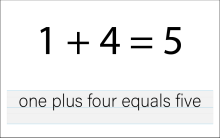
|
Math Clip Art--The Language of Math--Numbers and Equations 04 | Math Clip Art--The Language of Math--Numbers and Equations 04TopicThe Language of Math DescriptionThis clip art image from the Language of Math series illustrates the equation "1+4=5" in both numerical and word form. It continues the pattern of increasing sums, now reaching five. The dual representation of the equation helps students connect the abstract mathematical symbols with their concrete verbal expressions. This visual aid is crucial in developing number sense and understanding the concept of addition, particularly how combining smaller numbers results in larger ones. |
Numerical Expressions |
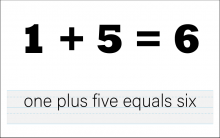
|
Math Clip Art--The Language of Math--Numbers and Equations 05 | Math Clip Art--The Language of Math--Numbers and Equations 05TopicThe Language of Math DescriptionThis clip art from the Language of Math collection showcases the equation "1+5=6" in both numerical and word formats. It continues the series of addition equations, now introducing the sum of six. The simultaneous presentation of the equation in symbols and words reinforces the connection between mathematical language and everyday language. This visual representation helps students understand how numbers combine to form larger values and introduces the concept of "five more than" the initial number. |
Numerical Expressions |
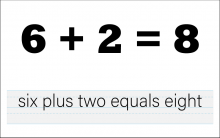
|
Math Clip Art--The Language of Math--Numbers and Equations 06 | Math Clip Art--The Language of Math--Numbers and Equations 06TopicThe Language of Math DescriptionThis image illustrates the equation "6+2=8" in both numerical and word form, continuing the progression of addition concepts with larger numbers. The dual representation reinforces the connection between mathematical symbols and their verbal expressions, a crucial skill in developing mathematical literacy. This visual aid helps students understand how numbers combine to create larger values and introduces the concept of adding to a number greater than 5. |
Numerical Expressions |
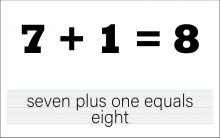
|
Math Clip Art--The Language of Math--Numbers and Equations 07 | Math Clip Art--The Language of Math--Numbers and Equations 07TopicThe Language of Math DescriptionThis clip art from the Language of Math collection showcases the equation "7+1=8" in both numerical and word formats. It continues the series of addition equations, now introducing the concept of adding 1 to a larger number. The simultaneous presentation of the equation in symbols and words reinforces the connection between mathematical language and everyday language. This visual representation helps students understand how numbers combine and introduces the concept of "one more than" a given number. |
Numerical Expressions |
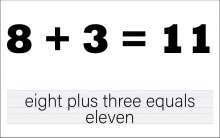
|
Math Clip Art--The Language of Math--Numbers and Equations 08 | Math Clip Art--The Language of Math--Numbers and Equations 08TopicThe Language of Math DescriptionThis image presents the equation "8+3=11" in both numerical and word form, advancing the complexity of addition concepts by introducing a sum greater than 10. The dual representation of the equation reinforces the connection between mathematical symbols and their verbal expressions. This visual aid is crucial in developing number sense and understanding the concept of addition, particularly how combining single-digit numbers can result in double-digit sums. |
Numerical Expressions |
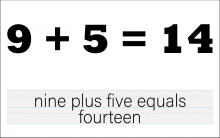
|
Math Clip Art--The Language of Math--Numbers and Equations 09 | Math Clip Art--The Language of Math--Numbers and Equations 09TopicThe Language of Math DescriptionThis clip art from the Language of Math collection illustrates the equation "9+5=14" in both numerical and word form. It continues the progression of addition concepts, now introducing a larger sum and the concept of adding a single-digit number to 9. The dual representation of the equation helps students connect the abstract mathematical symbols with their concrete verbal expressions. This visual aid is crucial in developing number sense and understanding the concept of addition, particularly how combining numbers can result in sums greater than 10. |
Numerical Expressions |
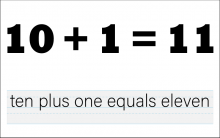
|
Math Clip Art--The Language of Math--Numbers and Equations 10 | Math Clip Art--The Language of Math--Numbers and Equations 10TopicThe Language of Math DescriptionThis image from the Language of Math collection presents the equation "10+1=11" in both numerical and word form. It marks a significant transition in the addition sequence, introducing the concept of adding to a double-digit number. The dual representation of the equation reinforces the connection between mathematical symbols and their verbal expressions. This visual aid is crucial in developing number sense and understanding the concept of addition, particularly how adding to 10 results in the next consecutive number. |
Numerical Expressions |
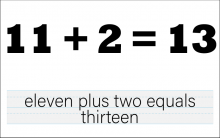
|
Math Clip Art--The Language of Math--Numbers and Equations 11 | Math Clip Art--The Language of Math--Numbers and Equations 11TopicThe Language of Math DescriptionThis image from the Language of Math collection illustrates the equation "11+2=13" in both numerical and word form. It advances the complexity of addition concepts by introducing larger numbers and sums exceeding 10. The dual representation of the equation reinforces the connection between mathematical symbols and their verbal expressions. This visual aid is crucial in developing number sense and understanding the concept of addition, particularly how combining numbers results in sums greater than 10. |
Numerical Expressions |
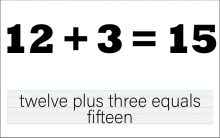
|
Math Clip Art--The Language of Math--Numbers and Equations 12 | Math Clip Art--The Language of Math--Numbers and Equations 12TopicThe Language of Math DescriptionThis clip art from the Language of Math collection showcases the equation "12+3=15" in both numerical and word formats. It continues the progression of addition concepts with larger numbers and sums. The simultaneous presentation of the equation in symbols and words reinforces the connection between mathematical language and everyday language. This visual representation helps students understand how numbers combine and introduces the concept of adding to a number greater than 10. |
Numerical Expressions |

|
Math Clip Art--The Language of Math--Numbers and Equations 13 | Math Clip Art--The Language of Math--Numbers and Equations 13TopicThe Language of Math DescriptionThis image from the Language of Math series presents the equation "13+4=17" in both numerical and word form. It continues the progression of addition concepts with increasingly larger numbers and sums. The dual representation of the equation helps students connect the abstract mathematical symbols with their concrete verbal expressions. This visual aid is crucial in developing number sense and understanding the concept of addition, particularly how combining teen numbers with single-digit numbers results in larger sums. |
Numerical Expressions |
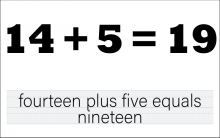
|
Math Clip Art--The Language of Math--Numbers and Equations 14 | Math Clip Art--The Language of Math--Numbers and Equations 14TopicThe Language of Math DescriptionThis clip art from the Language of Math collection illustrates the equation "14+5=19" in both numerical and word form. It advances the complexity of addition concepts by working with larger teen numbers and approaching sums close to 20. The simultaneous presentation of the equation in symbols and words strengthens the connection between mathematical language and everyday language. This visual representation helps students understand how numbers combine and introduces the concept of adding to a number in the teens. |
Numerical Expressions |
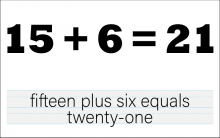
|
Math Clip Art--The Language of Math--Numbers and Equations 15 | Math Clip Art--The Language of Math--Numbers and Equations 15TopicThe Language of Math DescriptionThis image from the Language of Math series depicts the equation "15+6=21" in both numerical and word form. It continues the progression of addition concepts, now introducing sums that exceed 20. The dual representation of the equation reinforces the connection between mathematical symbols and their verbal expressions. This visual aid is crucial in developing number sense and understanding the concept of addition, particularly how combining teen numbers with single-digit numbers can result in sums greater than 20. |
Numerical Expressions |
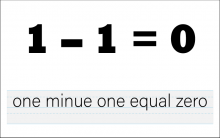
|
Math Clip Art--The Language of Math--Numbers and Equations 16 | Math Clip Art--The Language of Math--Numbers and Equations 16TopicThe Language of Math DescriptionThis clip art from the Language of Math collection illustrates the equation "1-1=0" in both numerical and word form. It introduces the concept of subtraction and the idea of a difference of zero. The simultaneous presentation of the equation in symbols and words reinforces the connection between mathematical language and everyday language. This visual representation helps students understand the basic concept of subtraction and introduces the idea that subtracting a number from itself results in zero. |
Numerical Expressions |

|
Math Clip Art--The Language of Math--Numbers and Equations 17 | Math Clip Art--The Language of Math--Numbers and Equations 17TopicThe Language of Math DescriptionThis image from the Language of Math series presents the equation "2-1=1" in both numerical and word form. It continues the introduction of subtraction concepts, now showing a non-zero difference. The dual representation of the equation reinforces the connection between mathematical symbols and their verbal expressions. This visual aid is crucial in developing number sense and understanding the concept of subtraction, particularly how removing one from a quantity results in a smaller number. |
Numerical Expressions |
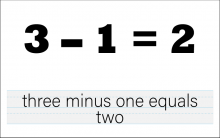
|
Math Clip Art--The Language of Math--Numbers and Equations 18 | Math Clip Art--The Language of Math--Numbers and Equations 18TopicThe Language of Math DescriptionThis image presents the equation "3-1=2" in both numerical and word form. It continues the progression of subtraction concepts, now working with a larger minuend. The simultaneous presentation of the equation in symbols and words strengthens the connection between mathematical language and everyday language. This visual representation helps students understand how subtraction works and introduces the concept of "one less than" a given number. |
Numerical Expressions |
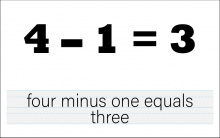
|
Math Clip Art--The Language of Math--Numbers and Equations 19 | Math Clip Art--The Language of Math--Numbers and Equations 19TopicThe Language of Math DescriptionThis image illustrates the equation "4-1=3" in both numerical and word form. It continues the progression of subtraction concepts, now working with a larger minuend. The dual representation of the equation reinforces the connection between mathematical symbols and their verbal expressions. This visual aid is crucial in developing number sense and understanding the concept of subtraction, particularly how removing one from a quantity results in a smaller number. |
Numerical Expressions |
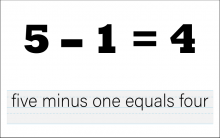
|
Math Clip Art--The Language of Math--Numbers and Equations 20 | Math Clip Art--The Language of Math--Numbers and Equations 20TopicThe Language of Math DescriptionThis clip art from the Language of Math collection showcases the equation "5-1=4" in both numerical and word formats. It continues the series of subtraction equations, now introducing a larger minuend. The simultaneous presentation of the equation in symbols and words reinforces the connection between mathematical language and everyday language. This visual representation helps students understand how subtraction works and introduces the concept of "one less than" a given number. |
Numerical Expressions |
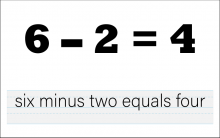
|
Math Clip Art--The Language of Math--Numbers and Equations 21 | Math Clip Art--The Language of Math--Numbers and Equations 21TopicThe Language of Math DescriptionThis image presents the equation "6-2=4" in both numerical and word form. It advances the complexity of subtraction concepts by introducing a subtrahend greater than 1. The dual representation of the equation reinforces the connection between mathematical symbols and their verbal expressions. This visual aid is crucial in developing number sense and understanding the concept of subtraction, particularly how removing multiple units from a quantity affects the result. |
Numerical Expressions |
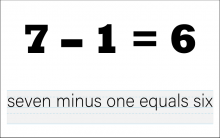
|
Math Clip Art--The Language of Math--Numbers and Equations 22 | Math Clip Art--The Language of Math--Numbers and Equations 22TopicThe Language of Math DescriptionThis clip art from the Language of Math collection illustrates the equation "7-1=6" in both numerical and word form. It continues the progression of subtraction concepts, now working with a larger minuend. The simultaneous presentation of the equation in symbols and words strengthens the connection between mathematical language and everyday language. This visual representation helps students understand how subtraction works and reinforces the concept of "one less than" a given number. |
Numerical Expressions |
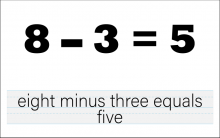
|
Math Clip Art--The Language of Math--Numbers and Equations 23 | Math Clip Art--The Language of Math--Numbers and Equations 23TopicThe Language of Math DescriptionThis image presents the equation "8-3=5" in both numerical and word form. It advances the complexity of subtraction concepts by introducing a larger subtrahend and working with single-digit numbers. The dual representation of the equation reinforces the connection between mathematical symbols and their verbal expressions. This visual aid is crucial in developing number sense and understanding the concept of subtraction, particularly how removing multiple units from a quantity affects the result. |
Numerical Expressions |
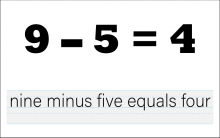
|
Math Clip Art--The Language of Math--Numbers and Equations 24 | Math Clip Art--The Language of Math--Numbers and Equations 24TopicThe Language of Math DescriptionThis clip art from the Language of Math collection showcases the equation "9-5=4" in both numerical and word formats. It continues the progression of subtraction concepts, now introducing a larger subtrahend and working with single-digit numbers. The simultaneous presentation of the equation in symbols and words reinforces the connection between mathematical language and everyday language. This visual representation helps students understand how subtraction works with larger numbers and introduces the concept of "finding the difference" between two numbers. |
Numerical Expressions |